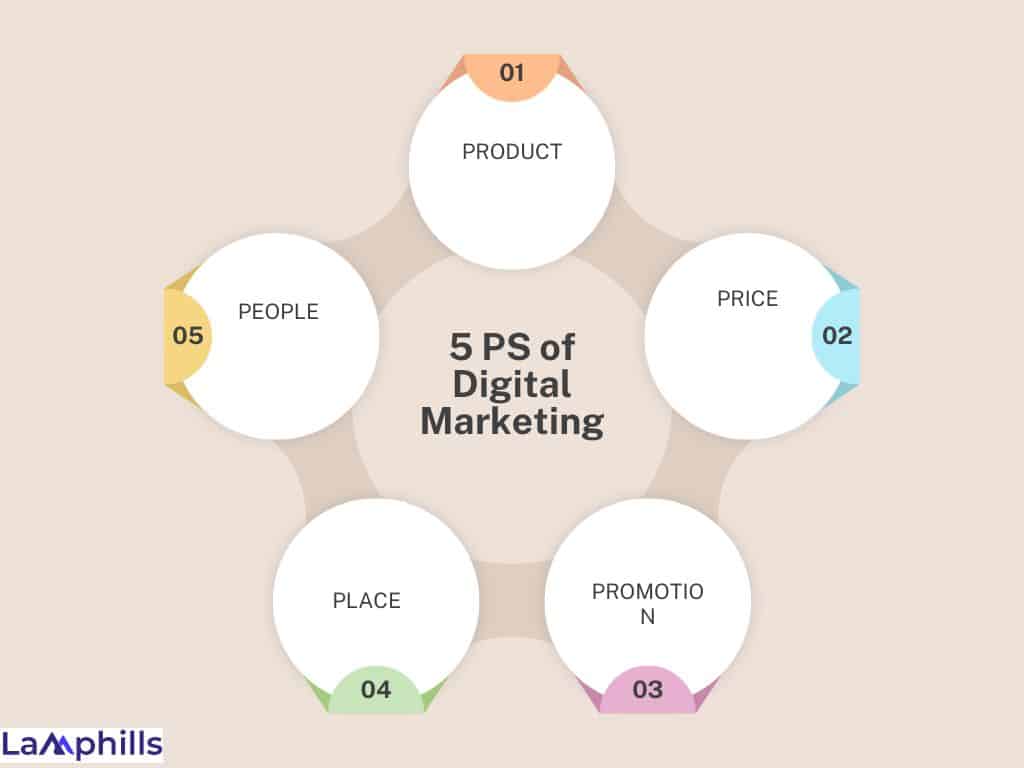What if you could identify the precise performance metrics that determine how well your digital marketing strategies are performing? Imagine how powerful your strategy could be with the right data to guide every decision. That’s what understanding the ultimate list of digital marketing KPIs (key performance indicators) can do for you when you track it in 2024. Below, I’ll be sharing what these essential KPIs are and also give some practical advice with real-life examples that can help you in improving your digital marketing.
Let’s get right to it!
Key Points
- Digital marketing KPIs (Key Performance Indicators) are measurable values that help assess the effectiveness of marketing strategies. Understanding and tracking these KPIs enables businesses to make data-driven decisions and optimize their marketing efforts.
- The conversion rate reflects the percentage of visitors who take a desired action, such as signing up or making a purchase. It is crucial to evaluate how effectively a website turns traffic into leads or customers and can be calculated using analytics tools.
- Utilize tools like Google Analytics, HubSpot, and social media analytics to monitor these KPIs. Regularly review metrics to adapt strategies, focusing on improving areas such as SEO, content quality, and marketing spending to enhance overall performance.
Digital Marketing KPIs
A key performance index, also known as a key performance indicator is a value, which can define how effectively a company works to complete its main goals.
Marketing metrics and KPIs seem to be so similar in the way they are defined that there is a slight difference between them.
Check out: Influencer Marketing KPIs: Best Practices and Tools to Measure Campaigns
Marketing metrics involve providing quantitative values to the processes and effectiveness of marketing operations. KPI on the other hand, refers to the performance of the whole business, and as such, these metrics are above the company’s marketing ranges and objectives.
For instance, marketing metrics consist of the number of visitors your brand’s website garners within a period. For a customer support staff, a KPI might be something like “Percentage of customer complaints resolved within 24 hours.” This indicator makes it easy to gauge how well the team is handling client complaints.
The success and efficiency of marketing initiatives and tactics are assessed using marketing metrics. They are essential because they reveal how effectively marketing initiatives increase engagement, conversions, and return on investment. Monitoring key performance indicators (KPIs) is one of the most crucial components of this assessment.
Although there is some difference between these two terms, these are often times used elastically. While it is still helpful to distinguish between them, a holistic view of the situation leads one to the conclusion that marketing metrics are part of KPIs.
Digital Marketing KPIs and Metrics
Digital marketing KPIs are the measurable values that a digital marketing team traces to understand the success of various online strategies. These metrics tell one whether campaigns are producing the intended output. Be it website traffic, more leads coming in the way, or brand awareness, KPIs light up the path ahead.
Why are KPIs important?
Well, put yourself in a ship captain’s shoes. You’re out on the sea without any kind of navigational tools, just being taken by the tide in some direction, perhaps, wasting your resources on absolutely inefficient strategies. KPIs can help you change course so your efforts culminate in some measured output. Well, I won’t say much about this. Watch the video above to understand why KPIs are important!
#1. Website Traffic
Website traffic is among the most simple yet important KPIs. It means the number of people who go to your site, helping you understand how well your campaigns are reaching the target audience.
- Why it matters: More traffic can mean a successful campaign.
- How to track it: This would be implemented by using tools like Google Analytics, tracking the number of visitors, where they come from-organic, paid, referral-and what page they visited most.
Tip: If the traffic decreases, check your SEO strategy. It may be because a new algorithm update changed your ranking position.

#2. Conversion Rate
Sure, your website might receive tons of traffic, but how many of those visitors convert into leads or customers? Conversion rate refers to the number of visitors that take an action as a percentage.
- Why it matters: It shows how effectively your website converts site visitors into customers.
- How to track it: You can track it through tools like Google Analytics and HubSpot and calculate the ratio of conversions to total visitors.
Example:
If I was running a landing page with an offer, perhaps a free ebook, and 50 people signed up out of 1,000 visitors, my conversion rate would be 5% of that.
The number of conversions ÷ the number of visits. For example, if you had 30 conversions from 1,000 visits, your conversion rate would be 3%, since 30 ÷ 1,000 = 3%.
#3. Customer Acquisition Cost (CAC)
Customer Acquisition Cost is the metric used to determine how much money you’re spending to acquire each customer. That would include all marketing and sales costs.
- Why it matters: It tells you whether your marketing is financially viable.
- How to track it: The sum of your marketing spent divided by the number of customers acquired.
Tip: Conversely, if your CAC is high, you may want to consider spending more resources on inbound marketing strategies that require much less spending, such as SEO and content marketing.
#4. Return on Investment (ROI)
You’ve spent money on it, sure, but how much are you getting back? Return on investment measures the profitability of your marketing efforts. It lets you know if the juice is worth the squeeze, if you know what I mean.
- Importance: This ensures that your marketing method generates money for you and doesn’t just cost you money.
- How to track it: Revenue – Cost of Campaign) / Cost of Campaign
Example: If you spent $1,000 on a Facebook ad campaign and made $3,000 in sales, then your ROI would be ($3000 – $1000) / $1,000 = 200%.

Why should ROI be your main concern?
If you spent $1,000 on a Facebook ad campaign and made $3,000 in sales, then your ROI would be ($3000 – $1000) / $1,000 = 200%.
ROI matters because it
- Justifies the money you spend on marketing.
- Allocates funds following productive tactics.
- Gives a clear picture of how effective marketing is.
- ROI indicates how much money your marketing plan is truly generating. Every dollar matters.
#5. Engagement Rate
The engagement rate tells how many people are interacting with your social media, email, or blog posting. It means likes, comments, shares, clicks, etc.
Engagement metrics encompass a variety of variables.
Key metrics include
- Likes
- Shares
- Comments
- Page visits
- Time spent on the page.
- Why it matters: Generally speaking, high engagement would connote high brand awareness and customer loyalty.
- How to track: Through social media platforms via Facebook Insights, Instagram Analytics, or tools like Hootsuite.
Tip: Low engagement rates may mean revisiting your content strategy. Is there value being given or just "fluff?

#6. Email Open Rate
Emails are no longer viewed by anyone. Quite a few, in fact, based on recent studies!
Therefore, email marketing is essential if your target audience permits it. Nevertheless, you must monitor your email marketing initiatives from the start to determine what works and what doesn’t.
The following are the primary metrics you should monitor:
New subscribers to the email
Unsubscribers
Email open rate.
Conversion rate
For email marketing to be successful, all four of these are crucial. In addition to increasing your subscriber count, you also want your subscribers to value your emails.
E-mail marketing is still one of the most cost-effective channels, but how effective can your campaigns really be if nobody’s opening your emails?
E-mail open rate refers to the number of opens against the number of delivered emails.
- Why it matters: You’ll get to review the relevance of your subject lines and timing.
- How to track: Normally, these open rate metrics can be found in email platform services like Mailchimp and ActiveCampaign.
Tip: In cases where your open rates are decreasing, you can consider A/B testing your subject lines or personalizing your emails with the recipient's name.
#7. Click-Through Rate (CTR)
CTR is the percentage of people who clicked on a link within an email or ad compared to the number of people who viewed the email or ad.
- Why it matters: High CTRs mean your content is encouraging people to take action.
- How to track: This gets automatically calculated in systems like Google Ads and Facebook Ads.
Example
If 100 people see your ad and of them 10 click, the CTR is 10%.
What makes this metric so important?
Just like I said, a high CTR shows that the proper audience is being drawn to your ads because they are relevant and well-targeted.
Monitoring CTR is beneficial because it:
- Optimize the wording and other elements of your ads.
- Improve targeted tactics to increase their applicability.
- Improve the overall effectiveness of your campaign.
- By concentrating on what works, you may efficiently manage your advertising budget.
#8. Bounce Rate
Overall, this shows the number of people visiting and leaving after viewing only one page. A high bounce rate might mean that people are not finding what they’re looking for, or your site is hard to use.
- Why it matters: This is a signal that your site needs improvement in either user experience or relevance.
- How to track it: Google Analytics can provide the bounce rate metrics for all your web pages.
Tip: If a page has a high bounce rate, refresh the content to satisfy visitors or make the call-to-action more explicit.
#9. Lead Generation
At this stage, lead generation becomes a crucial KPI since it measures how many potential customers your marketing campaign is generating. It can be new signups, downloads, or demo requests.
- Why it matters: It tells you whether your marketing campaigns are bringing in the right kinds of prospects.
- How to track: It can be done through the usage of CRM systems, like Salesforce or HubSpot.
Example:
If you ran a LinkedIn ad and got 100 new leads, this KPI helps in measuring the success of that campaign in bringing potential customers into your sales funnel.
#10. Cost Per Lead (CPL)
Cost per lead measures the cost of a generated lead. Similar to cost per action, cost per lead (CPL) involves paying for the contact details of a marketing-qualified lead—someone who could be interested in your offer—rather than a specific activity.
- Why it’s important: This lets you line up all marketing spending against lead generation goals.
- How to measure it: Total spending on marketing divided by the number of leads generated.
#11. Social Media Reach
In general, social media reach refers to the number of unique users viewing your social media content. It gives you an idea of how far your posted content is reaching and how effective your social media presence is.
- Why it matters: Greater reach means greater visibility of your brand.
- How to track it: Most social media platforms like Facebook, Instagram, and Twitter have analytics that allow tracking of reach.
Tip: Try changing the timing of your post, or even the format of your videos or stories, if you feel that your reach isn't improving.
#12. Customer Lifetime Value
Overall, CLV is the total revenue that a company will ever get from a customer in a lifetime relationship. This KPI basically helps businesses to focus on long-term customer relationships rather than gaining short-term in every respect.
- Why it’s important: It allows businesses to make more informed decisions regarding the value of investments in customer retention.
- How to track it: Multiply the average purchase value by the purchase frequency and customer lifespan.
#13. Organic Search Rankings
Your visibility depends a lot on your position in search engine results pages. Organic search ranking is about the traffic or positioning on your website, which results from searches related to specific keywords without paying for advertisements.
- Why it matters: The better the rankings, the more traffic and visibility you will receive.
- How to Track it: The process by which one can track this is through tools like SEMrush, Moz, etc.
Here’s a detailed template to help brands maximize The Ultimate List of Digital Marketing KPIs to Track in 2024.
What Are KPIs in Digital Marketing?
KPIs, or key performance indicators, are metrics that quantify the effectiveness of a certain digital marketing action. They serve as a collection of indicators that demonstrate how near or far initiatives are from their objectives. Since these KPIs change based on campaign performance, we must monitor them.
What Are the Three Types of KPIs for Digital Media?
In digital marketing, there are three kinds of KPIs:
- Awareness: Awareness refers to getting your brand in front of as many people as possible.
- Conversion: Conversion is the process of turning leads into customers or closing deals.
- Analysis: Examine your KPIs and calculate the cost of acquiring each new client.
How to Measure Digital Marketing Success?
Key metrics for measuring digital marketing success
- Website traffic.
- Conversion rate.
- Cost per acquisition (CPA).
- Return on investment (ROI)
- Click-through rate (CTR)
- Bounce rate
- Customer lifetime value (CLV)
- Social media engagement.
What Are the 5 PS of Digital Marketing?

Product, Price, Promotion, Place, and People—the five P’s of marketing—are a framework that helps direct marketing tactics and maintain marketers’ attention on the important things.
Conclusion
If you’re serious about improving effectively with your marketing endeavors, you have to track the right digital marketing KPI. Now, each of them provides actionable insights to better optimize the campaigns. Be it website traffic, conversion rates, or customer lifetime value, these are the KPIs that will help one understand and work toward business goals. I recommend that you stick to the tips and insights that this article shares. The following KPIs will empower you to make data-driven decisions toward the development of better digital marketing strategies. Thanks for reading!
Related Posts
- Media Mix Modeling Explained: The Key to Effective Marketing Investment
- Go-to-Market Strategy Examples: Proven Approaches
- How to Boost Your Business with Advanced Website Marketing Tactics
- The Best Media Planning Tools for Advertisers and Brands






